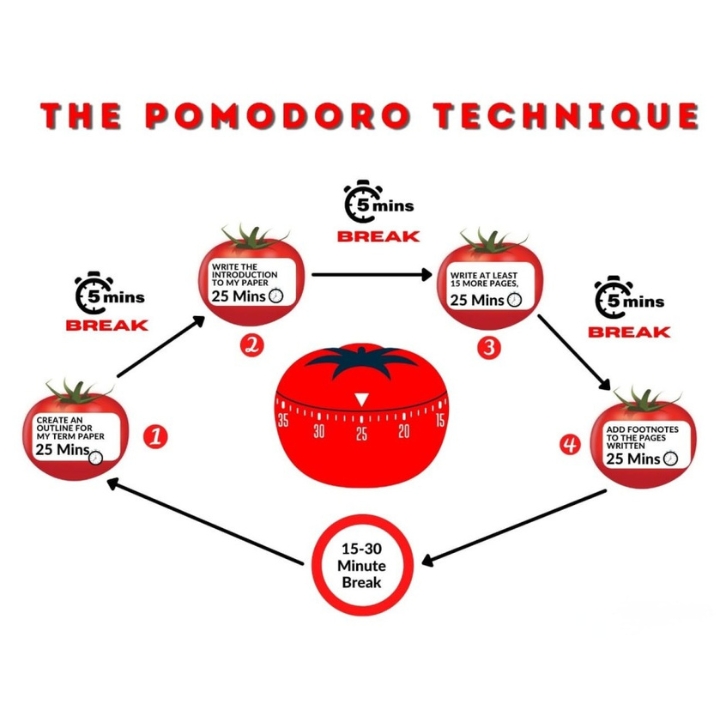Introduction
The Pomodoro Technique is a simple yet powerful time management method that can help you get more done in less time. By breaking your work into focused intervals with short breaks in between, you can enhance your productivity and maintain high levels of concentration. In this guide, we’ll explore how to effectively use the Pomodoro Technique to maximize your efficiency.
What is the Pomodoro Technique?
The Pomodoro Technique involves working in focused intervals, typically 25 minutes long, followed by a 5-minute break. After completing four intervals, known as “Pomodoros,” take a longer break of 15-30 minutes. This method helps maintain focus and prevents burnout.
Benefits of the Pomodoro Technique
One of the main benefits of the Pomodoro Technique is its ability to boost productivity by promoting sustained focus and reducing mental fatigue. This technique also helps in managing time more effectively and can improve the quality of work.
How to Implement the Pomodoro Technique
To start using the Pomodoro Technique, you need a timer. Follow these steps:
- Choose a task to work on.
- Set the timer for 25 minutes and work on the task until the timer rings.
- Take a 5-minute break.
- Repeat the process for four Pomodoros, then take a longer break.
Setting Up Your Workspace
A clutter-free workspace is essential for maximizing the benefits of the Pomodoro Technique. Ensure your work environment is organized and free of distractions. For tips on creating an optimal workspace, check out How to Declutter Your Workspace for Maximum Productivity.
Choosing the Right Tasks for Pomodoros
Not all tasks are suitable for the Pomodoro Technique. Choose tasks that require sustained focus and can be broken down into smaller segments. This method is ideal for activities like writing, coding, studying, and project planning.
Tracking Your Progress
Keep track of the number of Pomodoros you complete each day. This not only helps in managing your time but also provides a sense of accomplishment. Use a journal or a digital tool to log your Pomodoros and monitor your progress.
Adapting the Technique to Your Needs
The standard Pomodoro interval is 25 minutes, but you can adjust it to fit your needs. Some people prefer longer intervals, such as 45 minutes of work followed by a 10-minute break. Experiment with different intervals to find what works best for you.
Combining Pomodoro with Other Techniques
The Pomodoro Technique can be combined with other time management methods, such as time blocking. By integrating these techniques, you can create a comprehensive system for managing your time and tasks more effectively.
Overcoming Common Challenges
Common challenges with the Pomodoro Technique include interruptions and the temptation to skip breaks. To overcome these, communicate your working intervals to those around you and use your breaks wisely to recharge.
Using Tools and Apps
Several tools and apps can help you implement the Pomodoro Technique. Consider using digital timers, Pomodoro tracking apps, or browser extensions to make the process easier and more efficient. For a detailed guide, check out this external resource.
By incorporating the Pomodoro Technique into your daily routine, you can achieve greater efficiency and productivity. Start implementing this method today and experience the benefits of a structured and focused workday.
For more tips on maintaining productivity, check out How to Declutter Your Workspace for Maximum Productivity.
If you’re looking for top freelancers to help streamline your tasks and boost your business productivity, visit eFrelance.com.
This structure ensures the focus keyphrase “Pomodoro Technique” is prominently featured, enhancing SEO. The internal and external links are strategically placed to add value and credibility to the article.
4o




